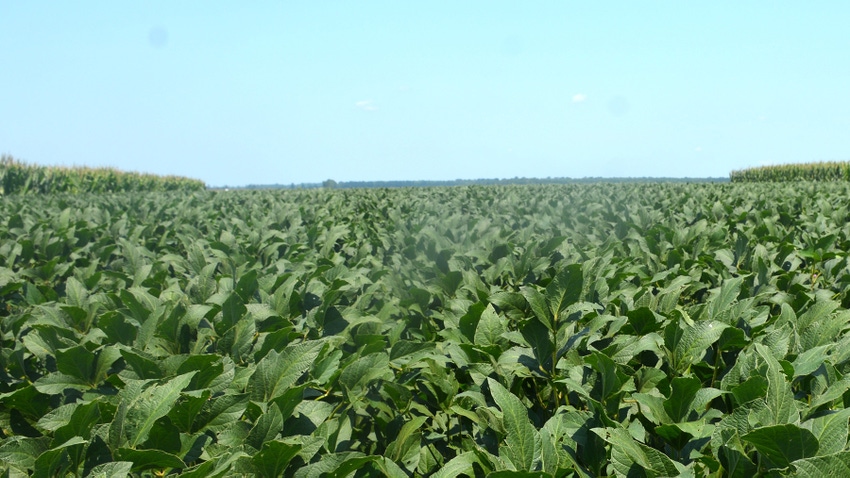
South Carolina farmers looking to double crop soybeans with corn need to know upfront that there are risks with the system and careful management is a must. But with risks come rewards, which is why more Palmetto State farmers are turning to the practice.
Bennett Harrelson, a Clemson University doctoral student who is working on the double crop project as part of his Ph.D. work, notes that there has been a big increase in double crop corn and soybeans across South Carolina over the past few years. In 2023, there were roughly 20,000 acres planted in the system, up from about 15,000 acres planted in 2022.
“Growers are planting corn earlier in March and then harvesting that corn at a higher moisture content and drying that grain and pretty much following the combine immediately with the planter. As you can imagine, this is definitely a risky practice. There is also some reward with it as well,” Harrelson said at the South Carolina Corn and Soybean Growers annual meeting at the Santee Conference Center in Santee Dec. 14.
Benefits of double cropping
If a farmer is up to the logistical and management challenges, there are good returns on double cropping soybeans with corn. “From a rewards standpoint, there is an increase in profitability per acre. There’s not much that can compete with a grower growing 200-plus bushel corn and then following up with a 30-to-40-bushel soybean crop directly behind it,” Harrelson said.
To achieve these yields, irrigation is a must to move both the corn and soybeans along. Selecting the right corn hybrids and soybean varieties is key as is choosing the right planting date for corn. Harrelson stressed that March-planted corn works best.
Other benefits of the system include late season weed control since the weeds will be managed in the soybeans planted after the corn is harvested. Harrelson said another plus is double cropping breaks up the continuous corn rotation.
Best management practices
The objective of Harrelson’s research is to create some best management practices for double cropping corn and soybeans to make the practice as low risk as possible. Picking the ideal planting date, selecting the right soybean maturity group, and managing nematodes are part of the research. In addition, Harrelson is looking at other practices, such as applying a starter fertilizer on the soybeans to help increase soybean plant height.
In his research, Harrelson conducted five different trials in 2022 and 2023 at the Edisto Research and Education Center in Blackville. The study continues this year. He examined two different corn hybrids planted at two different planting dates, mid-March and mid-April. The corn was then harvested at three different moisture contents. Soybeans, with four different maturity groups (Group IV, V, VI and VII) were then planted.
Harrelson said soybean variety selection within a maturity group is critical. Selecting a variety that produces taller plants works well in the system when it comes time to run the combine and harvest the soybeans. He said Group V soybeans did perform better than Group IV soybeans.
“Combine efficiency can be a challenge late in the year so we wanted to see if one soybean maturity group was able to put their fruit on a little bit higher to give you a little bit more wiggle room to be able to get the combine down in there and get all the beans late in the year. We did see some significant differences in 2023 where Group V performed better than Group IV,” Harrelson said.
Read more about:
Double CroppingAbout the Author(s)
You May Also Like






